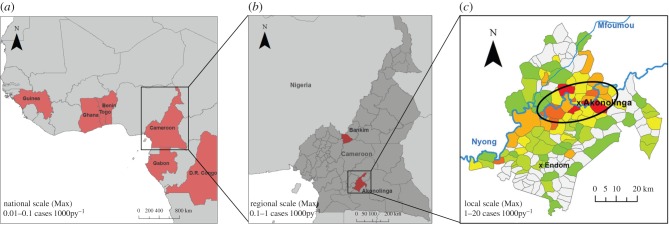Figure 5.
Bringing results to scale. (a) Most Buruli ulcer cases concentrate in Central and Western African countries, where annual incidence generally ranges from 0.01 to 0.1 cases 1000py−1 [45]. (b) Within endemic countries, disease cases accumulate in specific regions with favourable environmental traits such as slow-flowing rivers or flooded areas, where incidence typically ranges from 0.1 to 1 cases 1000py−1 [18,40–42]. (c) Within endemic regions, spatial clusters with higher incidence of 1–5 cases 1000py−1 can be observed (ellipse) and villages with the highest reported incidence in these clusters can have up to 5–20 cases 1000py−1 [18,20,41,43,44]. (a,b) were produced with ArcMap v. 10.2.2 to illustrate countries and regions with high long-term incidence, and (c) was adapted from Landier et al. [18] to show distribution of spatial clusters at local scales.

